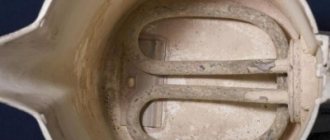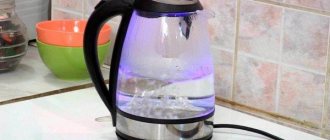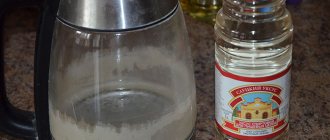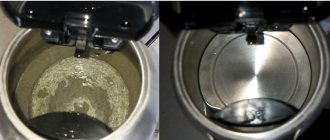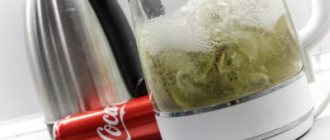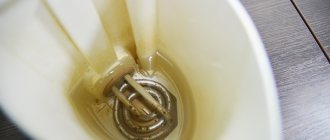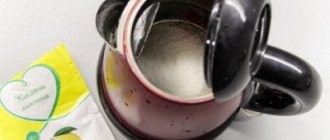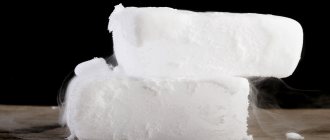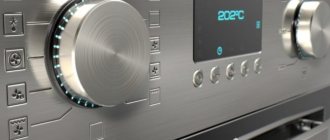Perishable equipment, white residue on the walls of the kettle or dry skin are just some of the negative consequences of using too hard water. The culprit is two elements - calcium and magnesium. However, this does not mean that they cannot be dealt with at home.
Hard water, which causes limescale on your kettle, is a common problem in many households across the country. This difficulty occurs at different scales in different geographic regions.
The hardness of an aqueous solution is determined by the geological composition of the rocks through which it flows. The hardness level can be checked in a laboratory, using the services of special companies, or doing the test yourself. And even faster, the presence of impurities in water can be seen at home on kitchen appliances.
Scale in a kettle - what is it and why does it appear?
Scale is a deposit of salts that are part of water. This plaque occurs as a result of a chemical reaction involving magnesium and calcium. It is the latter that is considered the main cause of scale formation in the kettle.
Despite the fact that sediment can harm an electrical appliance, the presence of a white coating indicates the usefulness of the water. Calcium and magnesium are microelements necessary for the normal development of the body. Therefore, the absence of sediment indicates the uselessness of water for humans.
Scale in a kettle is formed according to the following scheme: when heated, calcium and magnesium salts decompose. After this, less decomposed bicarbonates appear, which settle on the walls of the device. Gradually, the volume of plaque reaches such a concentration that the scale becomes visible.
The color of the sediment allows you to determine the approximate composition of the liquid:
- white - contains many compounds of calcium and magnesium salts;
- bright white - excess chlorine content;
- reddish - high iron content.
Reddish
Bright white
White
The rate at which sediment appears on the walls of the kettle indicates the degree of water hardness: the higher the first indicator, the greater the second. In such cases, it is recommended to change the type of fluid or purchase a specialized filter.
Household anti-scale chemicals
There are now a large number of special means to combat scale. They are available in three forms: powder, tablets and liquid. Let's take a closer look at some of them:
HG is a descaling agent. It copes with it not only in the kettle, but also in all other household appliances - washing machines, dishwashers and so on. Its advantages are:
- efficiency;
- economical consumption;
- safety and harmlessness for equipment and people;
- does not leave streaks;
- has no smell.
It is not desirable for aluminum kettles, but who has them now?
Bagi Kumkumit - copes well with deposits in teapots, coffee makers and other household appliances. Very good because:
- contains citric acid;
- removes not only plaque, but also rust;
- safe for equipment and people;
- is used sparingly;
- has a pleasant smell.
No deficiencies identified
Luxus Professional is universal, suitable for cleaning any household appliances. Its advantages:
- safety;
- plant composition;
- prevents the appearance of scale;
- has a pleasant smell.
However, it does not always solve the problem in one go.
Cinderella "Antinakipin" is a domestically produced liquid product. It contains organic and mineral acids and copes well with scale. Its advantages:
- gives quick results;
- has no smell;
- affordable price.
No cons identified
Eona Bio is another domestic product. It:
- effective;
- inexpensive;
- without smell;
Well, we've dealt with the scale. How can I avoid its reappearance? Let's talk about prevention.
The difference between black scale and white scale
As mentioned above, white scale mainly settles in teapots. In addition to the above reasons, such plaque in some cases appears due to the increased lead content in the water. In each of the above situations, plaque forms only when the liquid is heated.
But sometimes black scale appears on the bottom and walls of the kettle. Such contamination is typical for metal devices coated with chromium oxide. Black scale is formed due to contact of the walls and bottom with acids: oxalic, citric and others. The appearance of such a deposit is possible if the kettle is not thoroughly rinsed after cleaning with household chemicals. And then these acids, when heated, react with the metal, provoking blackening of the latter.
It is believed that black plaque does not harm the body or household appliances. But to clean such contaminants (unlike white scale), chemicals or fine abrasives are used. That is, it is impossible to completely remove dark plaque without damaging the inner walls.
Fighting scale with improvised means
First, let's discuss how this can be done using available tools. But first, evaluate the condition of your kettle - what material it is made of. An electric and a regular kettle also require a different approach.
The easiest and safest way to remove scale is citric acid. It breaks down solid deposits and turns them into easily soluble and washable elements. This method is universal; it is suitable for enamel, metal and electric cookware. It is safe and not harmful to humans. The lemon itself, lemon juice, and zest are suitable for cleaning. You will need water (preferably filtered) and two lemons. So let's get started:
- Rinse the lemons thoroughly and pour boiling water over them.
- Roll the citrus fruit several times on a clean, flat surface. This will also help the juice release.
- Cut the lemon into slices or slices.
- Pour filtered water into the kettle.
- Send the sliced lemon there along with the juice that was released during slicing.
- Bring the water to a boil.
- Leave the water in the kettle until it cools.
- Remove the water along with the lemon.
- Treat any remaining limescale with used lemon.
- Wipe the walls and bottom of the kettle with a soft cloth without using hard sponges or abrasives.
- Rinse the kettle.
Considering the cost of citrus fruits, this method of dealing with scale may not seem economical. Then we will use citric acid.
For the procedure, one spoon of citric acid is enough - the bag will last for a long time.
- Pour a spoonful of citric acid into the kettle, pour in 500 milliliters of water, and boil.
- After 20-30 seconds, repeat boiling.
- After boiling, do not drain the water for 1.5 hours.
- Then pour out the water and remove any remaining plaque.
- If necessary, repeat the procedure.
- After completely removing the sediment, pour clean water into the kettle and boil
- Drain the water and rinse the kettle.
You can do without boiling, but this measure is more likely to be preventive, or if the scale is not large. To do this you need:
- Pour citric acid into a kettle with warm boiled water.
- Stir and leave the solution for at least 5 hours (it is best to do this in the evening, until the morning).
- Pour out the liquid and rinse the kettle with clean water.
- Fill it to the maximum mark and boil.
- Drain this water.
- You can use it.
If the kettle is electric or metal, then you can use table vinegar.
It certainly exists in every home. However, this is a very aggressive method, so it should not be used often. In addition, vinegar is very volatile, so the smell during the procedure is not guaranteed. And yet:
- In a kettle filled with water to the maximum level. Add 5 tablespoons of 9% vinegar.
- Boil, wait 15 minutes and boil again.
- Rinse the kettle thoroughly using special products to get rid of the pungent odor.
- Boil clean water in a kettle 3-4 times
Please note that plastic teapots cannot be cleaned this way.
Baking soda, or sodium bicarbonate , is a completely universal substance and an ideal household helper. And soda does a great job of removing scale. Because:
- Softens hard deposits, making them easy to remove.
- Destroys harmful bacteria.
- Has a slight abrasive effect and does not damage surfaces.
- Safe for humans.
To remove limescale, just boil water in a kettle with the addition of 1 spoon of this substance. Let the water cool, pour it out and remove any remaining scale with a sponge or cloth.
Do you like Coca-Cola?
But there is no scale, so we use this carbonated drink in our fight. True, it is better to release excess gases before starting. Next we proceed as follows:
- Fill the kettle halfway with Cola.
- Boil it and leave for at least half an hour.
- Drain and wipe the insides of the kettle with a dishcloth.
- Rinse with clean water.
- Fill the kettle with water to the maximum and boil.
- The kettle is ready to use.
If the scale in the kettle is very strong and thick, proceed as follows:
- Boil water in a kettle, filling it 3/4 full.
- Pour 3 tablespoons of soda into boiling water and leave for half an hour.
- When the water starts to cool, turn on the kettle or put it on gas and boil.
- Pour out the solution, rinse the kettle with warm water and rub the walls with a sponge.
- Fill the kettle halfway again and add 1 tablespoon of vinegar essence.
- Boil and leave until completely cool.
- Pour out the solution and scrub the inside of the kettle well with a hard sponge.
- Boil again with clean water.
This procedure may need to be repeated several times.
Why is it important to descale your kettle?
The scale that appears must be removed, since this plaque creates a favorable environment for the development of pathogenic microflora. Bacteria can penetrate tea or other drinks, along with which they enter the human body. In addition, a high salt content in water provokes the development of various pathologies:
- urolithiasis disease;
- gout;
- plaque;
- osteochondrosis.
These complications arise under the condition of constant consumption of water with a high concentration of calcium and magnesium salts.
Limescale is also dangerous for an electric kettle, as it shortens the service life of the device. In such devices, a heating element is used for heating. It is on this element that the first deposit forms. As the layer of plaque increases, the energy consumption used to heat the kettle increases. This leads to overheating of the heating element and breakdown of the device.
What to do if the water has a white sediment after boiling?
The preference for a specific softening water treatment technology should be given based on whether you want to solve this problem locally or on a large scale:
- If you only need soft drinking water, the filter jug we are all familiar with is quite sufficient. True, your home appliances will still work with water of increased hardness.
- Once you decide to take care of the long-term performance of household appliances, a good solution would be to buy special tablets or powders that soften water. This is an excellent option for dishwashers and washing machines, which, however, is completely unsuitable for treating drinking water if a white precipitate forms when the water is boiled.
- But let’s say you still approach the issue globally. Then we recommend that you think about installing reverse osmosis filters. They will soften all the water that comes to you from the taps, and you will not have to worry about your health or the condition of your appliances.
Preventing scale from appearing in a kettle
It is impossible to prevent sediment from appearing in the kettle. However, by using certain prevention methods, it is possible to reduce the harm that such plaque causes to the device and the body.
For this it is recommended:
- Drain off the remaining water. Repeated boiling promotes the formation of a white coating.
- Before each use, rinse the kettle with warm water.
- Pour purified or settled drinking water into the kettle.
- Clean the device periodically with soda or citric acid.
For prevention purposes, it is also recommended to pass water through a specialized filter. The latter will not remove all calcium and magnesium salts, but will prevent chlorine from entering the device.
Scale always forms in a kettle for natural reasons. Such sediment does not cause serious harm to the body, provided that the deposit is regularly cleaned off. If you constantly drink water from a kettle that contains scale, this can lead to the development of diseases.
Why can hard water be harmful?
Having hard tap water always causes numerous problems. The most common ones involve the occurrence of calcium deposits, called scale.
It is a brownish-gray coating on the surface of teapots and over time reduces the functionality of these devices. They become inefficient and contribute to increased operating costs and energy consumption.
Scale as small as 3mm can result in energy loss of up to 30%.
The higher the water hardness, the more difficult it is to remove sediment from the surface; you have to use more detergents, which not only harm the environment, but also the budget. Especially if you need to clean a metal kettle.
To soften the water, you can use filters. Some models can be directly attached to the kitchen faucet, while others fit into a jug to store drinking water. This filtered water tastes better, but the effect depends on the minerals contained in the particular water solution. If the device does not have a secondary filter, it may not remove most contaminants.
This is why scale appears in the kettle from filtered water. Reverse osmosis filters soften water for a short time before their functions destroy the same mineral compounds. Therefore, it is best to use an ion exchange filter.
Osmotic filters
And this option is even more expensive! Prices for osmotic filters start from 10 thousand and go up to infinity.
The filter forces water through a special membrane with microscopic cells. H2O molecules pass through it, but foreign impurities do not. Pass a saline solution through such a membrane and get fresh drinking water without a single bacteria.
More sophisticated models then also mineralize the water - adding useful minerals to it in natural concentrations.
If we were richer, we would buy just such a filter. But alas, alas...
What can you do if there is a white sediment in your well water?
If you can afford a filter or more efficient systems with an aeration column, ion exchange resins, etc., the problem disappears by itself. But if this is not possible, the algorithm below for purifying water in a well will help you. So, you need to carry out the following procedures:
- Carrying out inspection, waterproofing of seams between the rings and insertion of the pipe into the well.
- Formation of a waterproofing layer on the upper rings.
- Carrying out forced drying of the inside of the rings, removing silt and deposits on the walls.
- Cleaning or construction of a bottom sand-crushed stone filter.
- Creation of a shungite bottom filter layer.
- Disinfecting the walls of the well using a solution of a chlorine-containing product like “Belizna” (0.5 liters of product per bucket of water).
- Disinfection of contained water using a chlorine-containing agent.
- A device for aerating water in a well.
- Choosing a good well cover.
Why is it dangerous?
Liquids with an increased concentration of iron, calcium or magnesium salts have an unpleasant, slightly salty or bitter taste. With regular use, the taste buds get used to the harshness, so the inconvenience is often not noticed. White sediment in water is dangerous not only for people, but also for equipment.
For living organisms
Liquids with a high content of mineral salts negatively affect the health of living beings. Regular consumption of insoluble substances provokes the formation of kidney stones and clogs blood vessels. The longer harmful moisture is used, the more destructive the result.
Why hard liquid is dangerous Source 4.bp.blogspot.com
The presence of white sediment in water negatively affects human skin. Detergents do not lather well and dissolve in water. The components close the pores, disrupting the natural breathing of the upper integument. After washing your hair, the protective layer is destroyed from the hair, so the following is often observed:
- dandruff;
- itching;
- baldness.
The characteristic creaking of skin or hair after washing is the first sign of a problem. Using moisture with a high concentration of iron salts leads to dehydration and dryness. Restore natural balance with creams, balms and masks.
White sediment in the water slows down the cooking process. A high concentration of mineral salts interferes with both the cooking of meat and the absorption of proteins by the digestive system. Regular stress on the stomach and intestines leads to disturbances in the functioning of the body.
Damage to moisture with white sediment Source tribunecontentagency.com
The presence of white sediment in water is equally harmful to both humans and pets. When feeding pets dry diets, there is a risk of urolithiasis. Bathing cats and dogs in hard liquids causes hair loss.
White sediment in water is dangerous for plants. A high concentration of insoluble salts changes the mineral composition of the soil. With regular watering, a light coating appears on the top layer of soil and on the roots. Due to the hard layer, the underground parts do not absorb nutrients well, which leads to uneven development and death.
Method 5: A mixture of vinegar and soda for cleaning teapots
As everyone knows, when soda is added to vinegar, a chemical reaction occurs. You can use it to clean scale from a kettle, but you should be careful - you can’t just fill the kettle with vinegar and add baking soda. Such an aggressive impact will damage the container.
When mixed, baking soda and vinegar produce an active chemical reaction.
You need to fill the kettle two-thirds full and add one tablespoon of baking soda per liter of water. Then pour half a glass of vinegar into the tank or add three tablespoons of vinegar essence.
Bring the water to a boil and keep the kettle on low heat for half an hour. Then use a soft cloth to wipe off any dirt. This method is not suitable for electric kettles, but it does an excellent job of cleaning old scale from regular ones.
How often to perform the procedure
Usually the procedure is carried out as needed. The presence of scale on the walls is determined visually and by touch:
- The inner walls become rough.
- A light yellow, gray or brown crust forms.
- When rinsing the kettle, the water comes out with crumbs.
- Glass walls become cloudy.
On average, scale forms in 2-3 weeks.
But with frequent use of the device, as well as boiling hard water, the process can speed up significantly. Therefore, it is correct to focus on your observations. Don't start the kettle. The resulting plaque quickly hardens, and the layer of scale thickens.
Ph level
The rate of scale formation and the rate of oxidation reactions is also influenced by the acid-base balance indicator - Ph. According to SanPinN rules, in normal drinking water it should be 6-9 units, it is better to strive for 7 units.
At the same time, the pH standards of water intended for various industrial needs differ from the pH standards of drinking water:
- in public swimming pools this standard is 7.2-7.4;
- in the production of beer, a water base with indicators of 6.0-6.5 is used;
- for soft drinks 3.0-6.0;
- in heat supply systems, the parameter is indicated at a temperature of +25ºС and is in the range of 7.0-8.5 for open systems and in the range of 7.0-11.0 for closed ones;
- in power engineering and steam boilers no less than 8.5;
- in cooling systems: for circulating and additional water 6.5-8.5, in circulating cold circuit 6.5-8.2, hot circuit 6.8-8.0.
How to remove white sediment from water 100%
There are several ways to purify drinking water from hardness salts.
Reverse osmosis. The principle of the method is that water passes through semi-permeable membranes (most often polyamide). Along with hardness salts, most of the other salts also leave. The positive effect of such treatment can reach up to 99.9%. This technology is most common in household drinking water preparation systems. However, the method also has a drawback; it consists in the need to prepare the water supplied to the reverse osmosis membrane in advance.
Electrodialysis. Salts from water, for example from a well, which give a white precipitate after boiling, are removed using an electric field. Ions of substances dissolved in the liquid are eliminated using special membranes. Here, as in the previous technology, parallel removal of other salts along with hardness ions is carried out.
Thermal method. The water is simply heated, which removes only temporary (carbonate) hardness. Most often this method is used in everyday life, but it can also be used in industry, for example, at thermal power plants.
Softening with reagents. The method consists of adding your choice of soda or slaked lime to the water. In this case, the already familiar calcium and magnesium salts turn into insoluble compounds and form a white precipitate in the water. This option is considered justified if it is necessary to process a lot of water, since it entails the need for additional, rather specific steps: filtering sediment, precise dosage of the reagent.
Ion exchange. In this case, ion-exchange granular loading is used (usually ion-exchange resins). When in contact with water, it absorbs cations of hardness salts (calcium, magnesium), releasing, in accordance with the ionic form, sodium or hydrogen ions. Therefore, these methods are called: Na+ exchange and H+ exchange. Normally, with one-stage sodium cationization, water hardness drops to 0.05–0.1 mEq/L, with two-stage sodium cationization – to 0.01 mEq/L.
Read material on the topic: Harmful impurities in water: types and methods of purification
Method 7: How to clean a kettle with Cola, Sprite or Fanta?
Oddly enough, however, this method has a right to exist.
First of all, a few rules:
- Do not use this method for electric kettles with an open heating coil - the sugar contained in drinks will cause much more damage to it than scale.
- For enameled surfaces, choose drinks without dyes, otherwise the shade of the container may change in a completely unpredictable direction.
- If there are scratches inside the kettle, you should also abandon this method - the dyes may become embedded in the damaged surface.
The cleaning process itself is quite simple. Fill the kettle halfway with the drink and turn it on. Leave it for about 20 minutes after the liquid boils. Drain it and rinse it with clean water.
Cola is not only a drink, but also an excellent cleaning agent
It sounds incredible, but even old scale can be cleaned this way. However, another question arises here - how safe it is to drink such drinks if they remove something that aggressive detergents cannot always cope with.
Method 6: Remove old scale with soda, vinegar and citric acid
This method cannot be called gentle: it has a very aggressive effect on the surface, so it is permissible to use it only if the kettle has not been cleaned for several months and a thick layer of scale has formed inside.
This method is only suitable for the oldest scale
In order to clean the kettle, you will need to boil water in it three times for 30 minutes. The first time - with a tablespoon of soda, the second time - with a tablespoon of citric acid, the third time - with half a glass of vinegar. For each case, water should fill the container by two-thirds.
After the last boil, carefully wipe the kettle with a sponge and then boil it several times with clean water. It is very important to ventilate the room well during the cleaning process, as vinegar emits an extremely unpleasant odor when heated.
